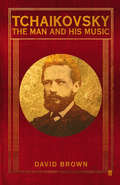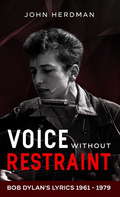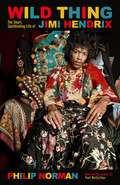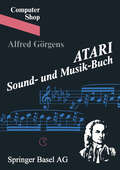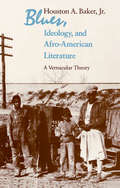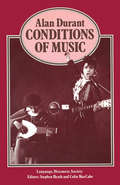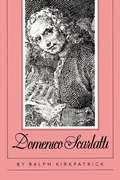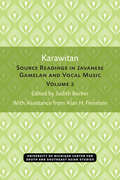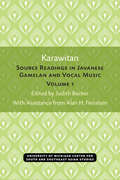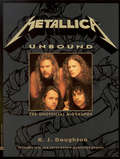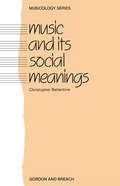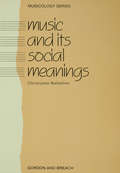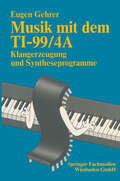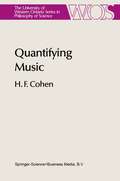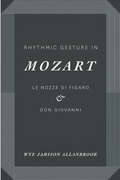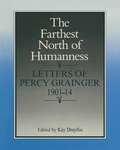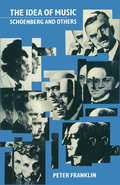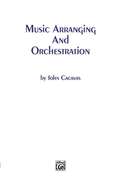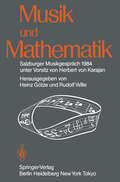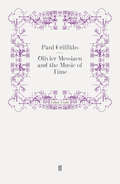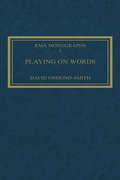- Table View
- List View
Tchaikovsky: The Man and his Music
by Prof. David BrownThis volume uniquely combines a lively biography of one of the best-loved composers of the nineteenth century with a detailed chronological guide to much of his oeuvre, from the most popular - Swan Lake or the 1812 Overture - to the lesser known pieces. David Brown enthusiastically and sensitively guides the reader through Tchaikovsky's music in the context of his life. His writing on the music is accessible and informative, both for the professional musician and the keen amateur listener. The biographical writing includes fascinating quotations from the composer's letters, and those of his friends; the Tchaikovsky that emerges is, despite his periodic struggle with depression, a man with a positive attitude to life, and a kind and supportive friend to many around him. This is essential reading for anyone with an interest in Tchaikovsky, his music, or the culture of the time.'One of the finest one-volume biographies to have appeared in recent years, written with such insight that it feels as though one is on a hot-line to the composer himself . . . by the end I felt I knew Tchaikovsky so much better. A classic.' Classic FM Magazine'I can't imagine a more intelligently sympathetic treatment of the man and his music.' BBC Music Magazine
Voice Without Restraint: Bob Dylan's Lyrics 1961 - 1979
by John HerdmanBob Dylan was awarded the Nobel Prize in Literature in June 2016, and seldom in recent years has it been more richly deserved.That a song writer’s lyrics should be regarded as literature was an idea at which many were surprised.Others have felt that to isolate the lyrics of a song from its musical context is unreal. Ultimately that is true: a song is an indefeasible whole, an inseparable marriage of words and music which achieves its overall emotional effect by that symbiosis and not otherwise.Yet it can also be said that the two components can be separately considered as two elements in the artist’s creative utterance, and discussed as such.The evidence of Dylan’s manuscripts supports the view that in writing his lyrics his way of going about things is not always widely different from that of a poet.Bob Dylan commented on the Nobel Prize in Literature which was awarded to him "for having created new poetic expressions within the great American song tradition": "When I first received this Nobel Prize for Literature, I got to wondering exactly how my songs related to literature. I wanted to reflect on it and see where the connection was."Voice Without Restraint, refers to and is from the song “I dreamed I saw St Augustine” on John Wesley Harding, and is a phrase chosen to evoke the full-blooded commitment to his artistic utterance which is the hallmark of Bob Dylan’s voice – in all senses.
Wild Thing: The short, spellbinding life of Jimi Hendrix
by Philip NormanAlmost 50 years after his lonely death, Hendrix is the abiding symbol of musical genius cut tragically short. Wild Thing will be the first biography to bring together the splendour and sadness of his brief life, and to attempt to unravel the circumstances of his death. Hendrix revolutionised classic rock, inventing a whole new vocabulary for the guitar. Onstage he pushed the boundaries of Sixties permissiveness, fellating the strings of the guitar with his tongue, lying it flat and straddling it, even setting fire to it. Yet in private he was polite, shy and sweet-natured. Norman will explore these contradictions in a narrative that takes us from Hendrix's roots in Seattle to his louche and glamorous life in Mayfair, when London was the world's most 'swinging' capital and then back to the US with the series of historic outdoor rock festivals that rounded out the decade. Wild Thing will be a celebration of matchless artistry, and a gripping chronicle of those now mythical times. But it will also investigate the peculiar conditions of his death, part whodunnit as it tells the most cautionary of rock 'n' roll parables. After all these years of rumour and speculation, Jimi's ghost may finally be laid to rest.
Blues, Ideology, and Afro-American Literature: A Vernacular Theory
by Houston A. Baker, Jr.Relating the blues to American social and literary history and to Afro-American expressive culture, Houston A. Baker, Jr., offers the basis for a broader study of American culture at its "vernacular" level. He shows how the "blues voice" and its economic undertones are both central to the American narrative and characteristic of the Afro-American way of telling it.
Domenico Scarlatti (PDF)
by Ralph KirkpatrickAgain available in paperback, this definitive work on the genius of Domenico Scarlatti (1685-1757) is the result of twelve years of devoted effort by America's foremost harpsichordist and one of the principal authorities on eighteenth-century harpsichord music. Mr. Kirkpatrick traveled extensively to collect material that has tripled the known facts about Scarlatti's life, providing the first adequate biography of one of the greatest harpsichord composers of the eighteenth century and one of the most original composers of all time. The second half of his book is an illuminating study of Scarlatti's 555 sonatas, concluding with a chapter on their performance. The book contains extensive appendixes, including discussions of ornamentation and Scarlatti's vocal music, and an updated section of addenda and corrigenda.
Karawitan: Source Readings in Javanese Gamelan and Vocal Music, Volume 2 (Michigan Papers On South And Southeast Asia #30)
by Judith BeckerThe twentieth century has spawned a great interest in Indonesian music, and now books, articles, and manuscripts can be found that expound exclusively about karawitan (the combined vocal and instrumental music of the gamelan). Scholar Judith Becker has culled several key sources on karawitan into three volumes and has translated them for the benefit of the Western student of the gamelan tradition. The texts in her collection were written over a forty-five-year time period (ca 1930–1975) and include articles by Martopangrawit, Sumarsam, Sastrapustaka, Gitosaprodjo, Sindoesawarno, Poerbapangrawit, Probohardjono, Warsadiningrat, Purbodiningrat, Poerbatjaraka, and Paku Buwana X. The final volume also contains a glossary of technical terms, an appendix of the Javanese cipher notations (titilaras kepatihan), a biographical listing, and an index to the musical pieces (Gendhing).
Karawitan: Source Readings in Javanese Gamelan and Vocal Music, Volume 1 (Michigan Papers On South And Southeast Asia #23)
by Judith BeckerThe twentieth century has spawned a great interest in Indonesian music, and now books, articles, and manuscripts can be found that expound exclusively about karawitan (the combined vocal and instrumental music of the gamelan). Scholar Judith Becker has culled several key sources on karawitan into three volumes and has translated them for the benefit of the Western student of the gamelan tradition. The texts in her collection were written over a forty-five-year time period (ca 1930–1975) and include articles by Martopangrawit, Sumarsam, Sastrapustaka, Gitosaprodjo, Sindoesawarno, Poerbapangrawit, Probohardjono, Warsadiningrat, Purbodiningrat, Poerbatjaraka, and Paku Buwana X. The final volume also contains a glossary of technical terms, an appendix of the Javanese cipher notations (titilaras kepatihan), a biographical listing, and an index to the musical pieces (Gendhing).
Metallica Unbound
by K.J. DoughtonWritten by a noted hard rock journalist who has covered the band since its inception 10 years ago, this one-of-a-kind, full-color collectors' volume provides the most in-depth information on the band available anywhere. Rare and never-before-published photos. Complete discography.
Music and Its Social Meanings (Musicology #2)
by Christopher BallantineFirst Published in 1984. Routledge is an imprint of Taylor & Francis, an informa company.
Music and Its Social Meanings (Musicology)
by Christopher BallantineFirst Published in 1984. Routledge is an imprint of Taylor & Francis, an informa company.
Quantifying Music: The Science of Music at the First Stage of Scientific Revolution 1580–1650 (The Western Ontario Series in Philosophy of Science #23)
by H.F. CohenThe soul rejoices in perceiving harmonious sound; when the sound is not harmonious it is grieved. From these affects of the soul are derived the name of consonances for the harmonic proportions, and the name of dissonances for the unharmonic proportions. When to this is added the other harmonie proportion whieh consists of the longer or shorter duration of musical sound, then the soul stirs the body to jumping dance, the tongue to inspired speech, according to the same laws. The artisans accommodate to these harmonies the blows of their hammers, the soldiers their pace. As long as the harmonies endure, everything is alive; everything stiffens, when they are disturbed.! Thus the German astronomer, Johannes Kepler, evokes the power of music. Where does this power come from? What properties of music enable it to stir up emotions which may go far beyond just feeling generally pleased, and which may express themselves, for instance, in weeping; in laughing; in trembling over the whole body; in a marked acceleration of breathing and heartbeat; in participating in the rhythm with the head, the hands, the arms, and the feet? From the beginning of musical theory the answer to this question has been sought in two different directions.
Rhythmic Gesture in Mozart: Le Nozze di Figaro and Don Giovanni
by Wye Jamison AllanbrookWye Jamison Allanbrook’s widely influential Rhythmic Gesture in Mozart challenges the view that Wolfgang Amadeus Mozart’s music was a “pure play” of key and theme, more abstract than that of his predecessors. Allanbrook’s innovative work shows that Mozart used a vocabulary of symbolic gestures and musical rhythms to reveal the nature of his characters and their interrelations. The dance rhythms and meters that pervade his operas conveyed very specific meanings to the audiences of the day.
Rhythmic Gesture in Mozart: Le Nozze di Figaro and Don Giovanni
by Wye Jamison AllanbrookWye Jamison Allanbrook’s widely influential Rhythmic Gesture in Mozart challenges the view that Wolfgang Amadeus Mozart’s music was a “pure play” of key and theme, more abstract than that of his predecessors. Allanbrook’s innovative work shows that Mozart used a vocabulary of symbolic gestures and musical rhythms to reveal the nature of his characters and their interrelations. The dance rhythms and meters that pervade his operas conveyed very specific meanings to the audiences of the day.
Rhythmic Gesture in Mozart: Le Nozze di Figaro and Don Giovanni
by Wye Jamison AllanbrookWye Jamison Allanbrook’s widely influential Rhythmic Gesture in Mozart challenges the view that Wolfgang Amadeus Mozart’s music was a “pure play” of key and theme, more abstract than that of his predecessors. Allanbrook’s innovative work shows that Mozart used a vocabulary of symbolic gestures and musical rhythms to reveal the nature of his characters and their interrelations. The dance rhythms and meters that pervade his operas conveyed very specific meanings to the audiences of the day.
Rhythmic Gesture in Mozart: Le Nozze di Figaro and Don Giovanni
by Wye Jamison AllanbrookWye Jamison Allanbrook’s widely influential Rhythmic Gesture in Mozart challenges the view that Wolfgang Amadeus Mozart’s music was a “pure play” of key and theme, more abstract than that of his predecessors. Allanbrook’s innovative work shows that Mozart used a vocabulary of symbolic gestures and musical rhythms to reveal the nature of his characters and their interrelations. The dance rhythms and meters that pervade his operas conveyed very specific meanings to the audiences of the day.
The Idea of Music: Schoenberg and others
by P. FranklinWhy has modern music evolved as it has? Why is it that certain leading composers from the first half of this century are now considered insignificant, while the responsibility for the development of a musical language of modernism has been attributed to Schoenberg and the Second Viennese School? In this book the author seeks to re-examine Schoenberg's innovations through a reassessment of the nature of artistic expression and artistic truth. Starting from the premise that Austro-German music in the late nineteenth century was dominated by philosophical ideas, he has focused on writing by Schoenberg, Adorno and Thomas Mann, setting these alongside a discussion of the music of Pfitzner, Schreker, Mahler, Richard Strauss and Schoenberg himself, in a compelling argument for a review of the standard historical account of the period.
Music Arranging And Orchestration
by John CacavasOrchestrating is a highly complex technique and to many, even those with academic training, a mystery fraught with a labyrinth of hazards. What is required, along with innate talent and general musicality, is the practical "know how." This is hard to achieve without actual professional experience and contact with "live" orchestras. To this end, John Cacavas contributes his extensive experience and ability with a practical approach to the practical problems of orchestrating. It is in this context most orchestrators must function, and to whom this book should be of benefit. The author has been a "musical activist" in all the varied aspects of instrumental combination from the "classical" to the "contemporary," and in the diverse application of his skills in all the media that utilize music and "orchestrations."
Musik und Mathematik: Salzburger Musikgespräch 1984 unter Vorsitz von Herbert von Karajan
by Heinz Götze Rudolf WilleOlivier Messiaen and the Music of Time
by Paul GriffithsOlivier Messiaen was one of the outstanding creative artists of his time. The strength of his appeal, to listeners as well as to composers, is a measure of the individuality of his music, which draws on a vast range of sources: rhythms of twentieth-century Europe and thirteenth-century India, ripe romantic harmony and brittle birdsong, the sounds of Indonesian percussion and modern electronic instruments. What binds all these together is, on one level, his unswerving devotion to praising God in his art, and on another, his independent view of how music is made. Messiaen's music offers a range of ways of experiencing time: time suspended in music of unparalleled changelessness, time racing in music of wild exuberance, time repeating itself in vast cycles of reiteration.In Olivier Messiaen and the Music of Time, leading writer and musicologist, Paul Griffiths, explores the problems of religious art, and includes searching analyses and discussions of all the major works, suggesting how they function as works of art and not only as theological symbols. This comprehensive and stimulating book covers the whole of Messiaen's output up to and including his opera, Saint Fran�oise d'Assise.
Playing on Words: A Guide to Luciano Berio's Sinfonia (Royal Musical Association Monographs)
by David Osmond-SmithLuciano Berio's Sinfonia (1968) marked a return by the composer to orchestral writing after a gap of six years. This in-depth study demonstrates the central position the work occupies in Berio's output. David Osmond-Smith discusses the way in which Berio used the Bororo myth described in Levi-Strauss's Le cru et le cuit as a framework for Sinfonia. This is one of many influences in the work, which also include Joyce's 'Sirens' chapter from Ulysses, Beckett's The Unnameable and the scherzo from Mahler's 2nd Symphony. The listener who takes refuge in the score of Sinfonia, argues Osmond-Smith, finds there a maze of allusions to things beyond the score. It is some of those allusions that this book seeks to illuminate.
Playing on Words: A Guide to Luciano Berio's Sinfonia (Royal Musical Association Monographs)
by David Osmond-SmithLuciano Berio's Sinfonia (1968) marked a return by the composer to orchestral writing after a gap of six years. This in-depth study demonstrates the central position the work occupies in Berio's output. David Osmond-Smith discusses the way in which Berio used the Bororo myth described in Levi-Strauss's Le cru et le cuit as a framework for Sinfonia. This is one of many influences in the work, which also include Joyce's 'Sirens' chapter from Ulysses, Beckett's The Unnameable and the scherzo from Mahler's 2nd Symphony. The listener who takes refuge in the score of Sinfonia, argues Osmond-Smith, finds there a maze of allusions to things beyond the score. It is some of those allusions that this book seeks to illuminate.
